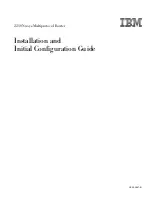
ADSL2/2+ Modem Router
www.phicomm.com
32
Chapter 4: Software Configuration
Active: You can activate or deactivate this function, the rule can take effect only when it is
activated.
Application: Select the application that the rule aimed at.
Physical Ports: Select the port whose traffic flow are controlled by the rule.
Destination MAC & IP & Mask & Port Range: Enter the IP information about the Destination
host for the rule.
Source MAC & IP & Mask & Port Range: Enter the IP information about the Source host for the
rule.
Protocol ID: Select one among TCP/UDP, TCP, UDP or ICMP protocols for the application.
Vlan ID Range: Enter the Vlan range, and the rule will be effective to the selected Vlans.
IPP/DS Field:
IP Precedence Remarking: Select the number to remark the priority for IP precedence.
Type of Service Remarking: Select the type to remark the service.
DSCP Remarking: Enter the number to remark the DSCP priority.
802.1p Remarking: Select the type to remark the 802.1p priority.
Queue: Select the priority type for the action.
Select the type of the action to assign the priority. When you select IPP/TOS, you
can assign the priority via IP information. IP QoS function is intended to deliver guaranteed as
well as differentiated Internet services by giving network resource and usage control to the
Network operator.
IP Precedence Range: Enter the IP precedence range that the Router takes to differentiate the
traffic.
Type of Service: Select the type of service that the Router takes to deal with the traffic.
DSCP Range: Enter the DSCP range to differentiate the traffic.
802.1p: Select the priority range for the rule. When you select DSCP, you can assign the priority
via DHCP (the header of IP group). It maps the IP group into corresponding service class.
















































